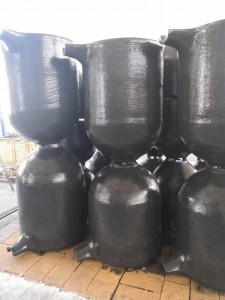
Carbon bonded silicon carbide crucible, is widely used in high temperature laboratories. These crucibles offer various advantages such as high strength and resistance to deformation and breakage at high temperatures. However, it's worth noting that they also have some drawbacks that need to be considered.
One of the main disadvantages of silicon carbide crucibles is their fragility. These crucibles are prone to breakage when subjected to mechanical shock during use. Once damaged, they can cause experiments to fail or compromise the accuracy of experimental data. This vulnerability should be taken into account and appropriate precautions taken during handling and use.
Another disadvantage of silicon carbide crucibles is that they are prone to oxidation reactions at high temperatures. When exposed to high temperatures, an oxide layer can form on the surface of the crucible, which can interfere with experimental results. It is important to prevent this oxidation by taking protective measures, such as covering the crucible surface with a protective layer.
In addition, silicon carbide crucibles are subject to certain limitations due to factors such as manufacturing process and cost. These limitations can limit the size, shape, and capacity of the crucible. Therefore, researchers and manufacturers need to consider these limitations when selecting crucibles for their specific requirements.
To address the shortcomings of silicon carbide crucibles, several solutions are available. First of all, in order to improve the service life of the crucible, methods can be used to strengthen the inner wall support to make it more wear-resistant and durable. This helps prevent breakage and extends the life of the crucible.
Secondly, in order to prevent oxidation, a protective layer can be applied to the surface of the crucible. This layer prevents the crucible from reacting with oxygen at high temperatures, thus preventing the formation of an oxide layer.
Finally, to overcome the limitations of silicon carbide crucibles, the design can be optimized and more advanced manufacturing processes adopted. By doing so, larger, deeper, and more complex shapes can be created, allowing the use of these crucibles in a wider range of experimental setups. Additionally, alternative materials such as high-temperature ceramics may be considered to replace silicon carbide crucibles.
In conclusion, silicon carbide crucibles have some disadvantages, but their application in the laboratory is still very beneficial. The overall performance and versatility of silicon carbide crucibles can be improved by taking appropriate measures and optimizations to address their brittleness, susceptibility to oxidation, and limitations. Researchers and manufacturers should carefully consider these factors when selecting high-temperature experimental crucibles.
Post time: Nov-14-2023
